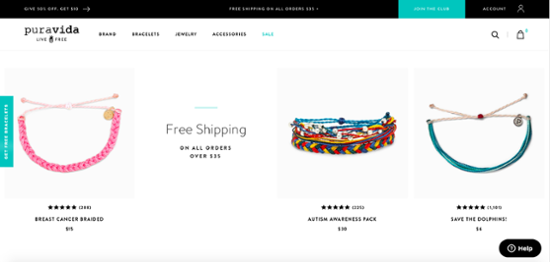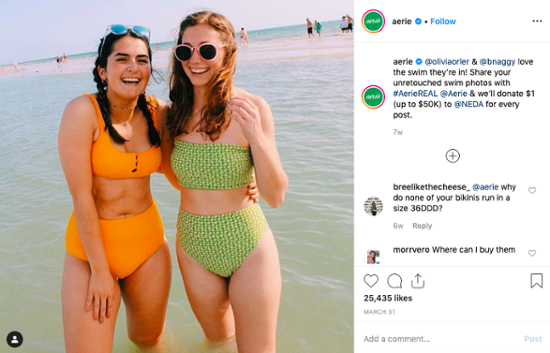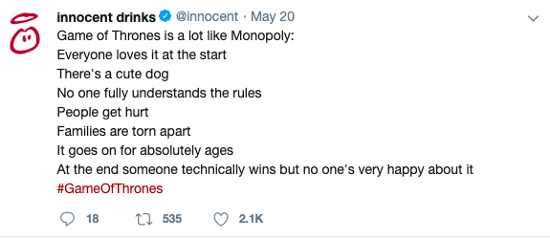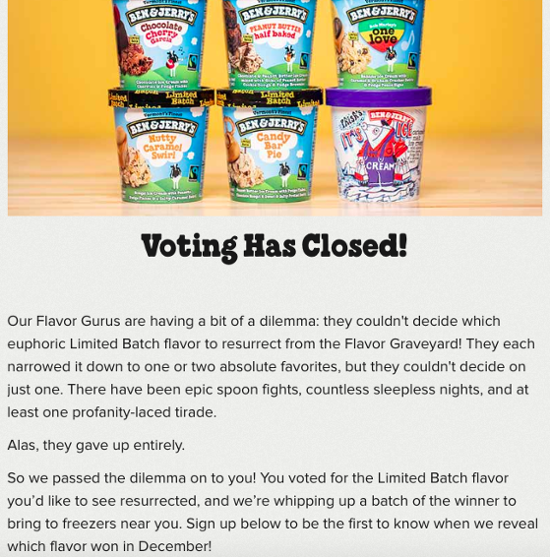Millennials – that oh so special era of individuals born between 1980 and 2000 (though it seems nobody can agree on the exact birth date margins). Surely you’ve heard of us. We love avocado toast and Instagram.
Ok I get it, not everyone loves millennials. We get a bad rap. We've been blamed for killing many things – the housing market, soap bars, and marriage, among other things.
But you'll need to make nice with millennials, because they make up a major chunk of your consumer audience.
It's time to take a serious look at your company's marketing strategy and make sure that it can hold its own in the modern world of millennial marketing. It's adapt or die, folks.
What Is Millennial Marketing?
Millennial marketing has changed how businesses advertise in the modern world of consumerism. It has forced companies to completely reevaluate and adjust how they market to audiences, because what worked on previous generations just doesn't work in the era of Instagram influencers.
Millennials make up for a whopping 25 percent of the U.S. population and 21 percent of consumer purchases. If you ask us, that’s a serious chunk of cheddar that they hold in the consumer market. So if you’re not marketing to this audience, then you’re essentially just sitting and looking at a gold mine instead of tapping into it.
That being said, marketing to millennials is easier said than done. Your traditional methods just won’t work here.
Challenges of Marketing to Millennials
With 20 years between the oldest and youngest millennials, there’s a wide range of audience members, with varying demographics, interests, and core values. How do you market to both 19 year olds and 40 year olds? This creates a challenge within itself, as there’s a hefty list of possible buyer personas within the millennial generation.
In addition to this, millennials present another particularly unique challenge to marketers. A study reported that 84 percent of millennials do not trust traditional advertising.
So all that money you’re spending on Facebook advertisements and search engine marketing? It’s not the solution. Millennials are remarkably immune to advertisements being shoved in their faces – quite simply, they hate being marketed to the old fashioned way.
Trends in Millennial Marketing
With all these challenges stacked up against you, how do you develop an effective millennial marketing strategy? Don’t worry – there is a way to get through to them; you just have to find the right tricks to do so.
Support a Cause
Millennials want the brands they support to care about their customers and the world as a whole. They’re not interested in supporting a company that’s just in it for the rat race – they want to make a difference.
According to a study, 50 percent of millennials are more willing to purchase from a company if that brand contributes to a good cause.
Find a charitable cause that aligns with your brand, and start initiatives where a little bit of every customer purchase goes toward supporting that cause.
Engage with Real People’s Stories
One of the ways to work around millennial distrust of advertisements is to incorporate the stories of real people into your strategy. Millennials are far more likely to take the word of a friend or put faith in a review over a traditional advertisement.
Include genuine customer testimonials on your website, and make sure that you have strong customer reviews in all the right places – Facebook, Google, and Yelp are all major hubs where people go to seek out reviews.
Use Social Media
If you’re not already using social media for your business, you need to amend that ASAP. Millennials are far more likely to buy from brands that engage with their audience through social media.
Facebook, Instagram, and Twitter are watering holes for millennial life. If you don’t show up to these watering holes, then you’re missing out on marketing to millennials in a way that fits their personal preferences.
Remember, effective inbound marketing is about delivering the right content to the right people in the right way. Social media is definitely one of the preferred channels for this particular demographic.
Allow Participation in Product Creation
Millennials appreciate being included in the creation of products – it shows that brands care about the best ways to please their customers. Ask your customers what they want – send out quizzes or post polls on your social media channels about what products people want to see developed.
This level of engagement is enticing and can lead to ongoing conversations as you make updates based on their feedback. You can even show give your audience a peek behind the curtain as you develop and launch these new products and offerings. Your messaging can highlight how the audience asked and you (the company) not only listened; you actually delivered what they requested.
Utilize User Generated Content
This is another way to engage with the stories of real customers to your advantage. Millennials trust user generated content more than branded content because it comes across as more genuine.
Encourage your customers to send in photos and videos of them using your product for you to include on your social media pages. Seeing real people using your products and putting faith in them will encourage others to do the same.
Great Millennial Marketing Campaign Examples
There are loads of companies out there that are already using these methods to create successful millennial marketing campaigns. The great thing is that there’s a lot of flexibility here – get creative with these strategies and create campaigns that are entertaining and fun for consumers.
Take a look at a few companies that are killing it at marketing to millennials. When you’re going through these examples, consider how you might be able to incorporate similar strategies into your own marketing plans.
Pura Vida Bracelets – Supporting a Cause
Pura Vida Bracelets was founded back in 2010, and they quickly rose to success. Why? Because their entire company is based around supporting a good cause. Every bracelet is handmade by local Costa Rican artisans, which provides jobs for the workers.

In addition, Pura Vida has an entire charity collection of bracelets, in which each bracelet you buy supports a different cause – breast cancer awareness, environmental preservation, and many more. The company has partnered with over 175 charities.
Millennials went nuts for their stuff. Buy fun, fashionable bracelets and support a good cause at the same time? Count us in.
Aerie – User Generated Content
Aerie changed the game of fashion advertising when they released their completely un-retouched campaign of their clothing and underwear line. They took it a step further with their Instagram #AerieREAL campaign, in which they feature customers' pictures in their clothes on their company page.

This is a perfect example of a highly effective millennial marketing campaign that encourages strong brand loyalty. The process of buyers posting and tagging photos of themselves wearing the clothing line is exciting. When buyers see the company share their photos, it proves to them that the company is actually paying attention and cares about the customer experience, even after the purchase is made.
Innocent Drinks – Use Social Media
Innocent Drinks makes delicious smoothies. But in addition to that, their Twitter game is hilariously fierce. Their customers love to follow them because they’re entertaining, and they engage in conversations going on in the world right now. Take their tweet about Game of Thrones for example:

Most viewers were enraged by the series finale of Game of Thrones, and Innocent Drinks decided to get in on the conversation. Their efforts paid off – that single tweet received over 2,000 likes and over 500 retweets from their followers.
Their social media strategy is successful because their customers connect well with their humor and, as a result, their overall brand. This promotes long term brand loyalty.
Ben & Jerry’s – Consumer Participation
Food companies have taken to asking their consumers what flavors they want to see in their latest products, and it’s been a huge hit with millennials.
Beloved ice cream company Ben & Jerry’s has gotten into the habit of releasing limited batch flavors – getting us hooked on tasty goods and then taking it away from us is borderline cruel. But the tactic has a purpose behind it – they follow up the limited releases with a poll, asking consumers to vote for the flavor they want to bring back permanently.

It’s not only a great way to engage their customers in the production of their brand products, but it also allows them to keep track of which flavors are most popular, so they can decide which ones to invest in.
Marketing to Millennials Is About Building Relationships
This is one of those unique situations where saying, “Think like your consumer” doesn’t necessarily work – thinking like a millennial would send you through a spiral of mental chaos, because you’d be trying to channel a 19 year old, a 40 year old, and every age group in between. Talk about identity crisis.
But ask yourself this – how can you market to your audience, without actually marketing to them? Marketing to millennials is all about building relationships between consumers and brands.
They hate feeling like they're being sold to, and instead value transparency and authenticity. Focus on connecting with your millennial consumers on a more human level.


Claire Cortese
I am a content creator here at Bluleadz. In my free time, I enjoy hugging dogs, watching reruns of The Office, and getting sunburnt at the beach.